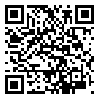Volume 18, Issue 50 (No.1&2-صفحات انگلیسی از 115 تا 122 2005)
2005, 18(50): 305-314 |
Back to browse issues page
Download citation:
BibTeX | RIS | EndNote | Medlars | ProCite | Reference Manager | RefWorks
Send citation to:



BibTeX | RIS | EndNote | Medlars | ProCite | Reference Manager | RefWorks
Send citation to:
Thesis submitted for degree of master of science in animal biology(Developmental Biology). Journal title 2005; 18 (50) :305-314
URL: http://jsci.khu.ac.ir/article-1-1157-en.html
URL: http://jsci.khu.ac.ir/article-1-1157-en.html
Abstract: (4534 Views)
Oxymetholone is an orally active anabolic-androgenic steroid. Oxymetholone was synthesized in 1959.It is a 17α-methylated, 5 α-saturated compound. This drug is used for the treatment of a variety diseases including anemia, growth delay in kids, myocardial damage in heart failiure and treatment of HIV associated wasting. Unfortunately, some of athletics use this drug because of its anabolic effect and its influence on muscular mass in high doses as a doping drug. In this study effects of oxymetholone in supraphysiologic doses on spermatogenesis of NMRI mice was evaluated. In our experiments, oxymetholone was injected(12mg/kg/day) interaperitoneally to mice 6 weeks and 4 weeks old in two periods of 35 and 70 days. The results demonstrated that in the 35-day injection period, there were not any teratogenic effects in treatment groups compared with control group. But in the 70-day injection period, a significant difference between treatment and control groups was observed. These effects consist of: a reduction in the size of testis and decrease in the number of spermatogonia type A and B, primary spermatocytes, spermatids and sperms. Testosterone was evaluated too. In some cases of the experimental group primary spermatocytes and spermatids were poured into the lumen of seminiferous tubules. Cellular disorder was also observed.
Published: 2005/10/15
| Rights and permissions | |
 | This work is licensed under a Creative Commons Attribution-NonCommercial 4.0 International License. |



